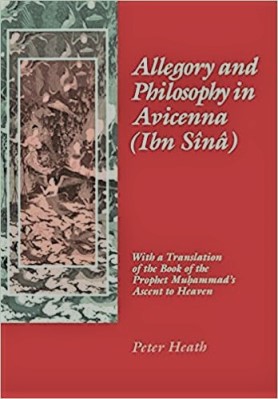Allegory and Philosophy in Avicenna (Ibn Sina): With a Translation of the Book of the Prophet Muhammad’s Ascent to Heaven (The Middle Ages Series)

| Allegory And Philosophy In Avicenna |
| Avicenna, Peter Heath |
| 268 |
| 4 Mb |
| |
| PDF Direct Download Link |
| Click for Hard Copy from Amazon |
ALLEGORY AND PHILOSOPHY IN AVICENNA – Book Sample
Avicenna: Courtier, Physician
Avicenna lived in a world rich in opportunity. After enjoying a brief era of strong central authority and cultural florescence in the first part of the 3rd/9th century, the ‘Abbasid empire had begun to experience political decentralization.
Given the enormous expanse of the empire, central control from Baghdad was unwieldy at best, and it was not long before it became politically unfeasible as well. The governing families of provinces far from the capital (Aghlabids in Ifriqiya, Tuhlnids in Egypt, Tahirids in Khurasan) naturally wished to achieve the greatest possible freedom of action, and they strove toward a state in which they loyally acknowledged the theoretical authority of the Caliph but kept real military and economic power in their own hands.
From here it was a short step for autonomous dynasties to emerge and begin to compete both with the central authorities in Baghdad and with one another. By the time of Avicenna’s birth in Afshana, near Bukhara, in 370/980, the Caliphs had openly acquiesced to the new political realities. Although they assiduously guarded the power that remained to them and sought to increase it whenever possible, their practical authority was restricted to the area around Baghdad itself.
Meanwhile, the great powers of the day-the Saffarids, Samanids, Buyids, Ghaznavids, centered in various parts of Iran, Afghanistan, and Transoxiana, and the Fatimids in Egypt-rose and fell. Previously extraneous regions became scats of empire.
Although political decentralization took its toll in periodic economic destabilization and military devastation, it actually did much to foster the blossoming of culture. Local monarchs sought to emulate the cultural patterns of ‘Abbasid court life.
Such rulers were perfectly aware that the attendance of eminent poets, noted scholars, and learned theologians at their courts added an aura of cultural glory that reinforced their shaky claims to political legitimacy. Hence, they were more than willing to promote the life of the mind, even if they themselves devoted their main energies to
Avicenna’s Theory of the Soul – ALLEGORY AND PHILOSOPHY IN AVICENNA
Psychology, the study of the soul, held a particular fascination for Avicenna. That the subject clearly lies near the heart of his concern for philosophy is indicated by the fact that he devoted numerous major and minor tracts to the subject and returned repeatedly to its elaboration throughout his life.
Avicenna’s psychological doctrines are stable in their general parameters, but his individual presentations of them differ according to considerations of philosophical intent, generic format, and audience of address.2 Like any psychology aspiring to comprehensiveness, Avicenna’s theory addresses four considerations:
- The nature of the soul
- The faculties of the soul
- The origin of the soul
- The final end of the soul
The Nature of the Soul
At the beginning of his “Explanation of the Condition of Prophethood and Apostleship” in the Mi’raj Nama, Avicenna posits an essential bifurcation in human beings. Humans, he says, consist of body and soul. The body is a “gathering” of humors and a “combination” of clements, “adorned” with parts, each with a specific function: the foot walks, the hand grasps, and so on.
More detailed description of the elements, humors, and parts may be found in Avicenna’s medical encyclopedia, al-Qanun Ji t-tibb (The Canon of Medicine), where he explains that the material elements (arkan) arc “simple bodies which are the primary components of human and other bodies.”4 They arc four in number: earth (heavy, cold, and dry), water (heavy, cold, and wet), fire (light, hot, and dry), and air (light, hot, and wet). In their diverse combinations, or temperaments (mizaj), these elements constitute all the world’s material bod-
To read more about the Allegory And Philosophy In Avicenna book Click the download button below to get it for free
or
or
 Don't Miss out any Book Click Join OpenMaktaba Telegram group
Don't Miss out any Book Click Join OpenMaktaba Telegram group